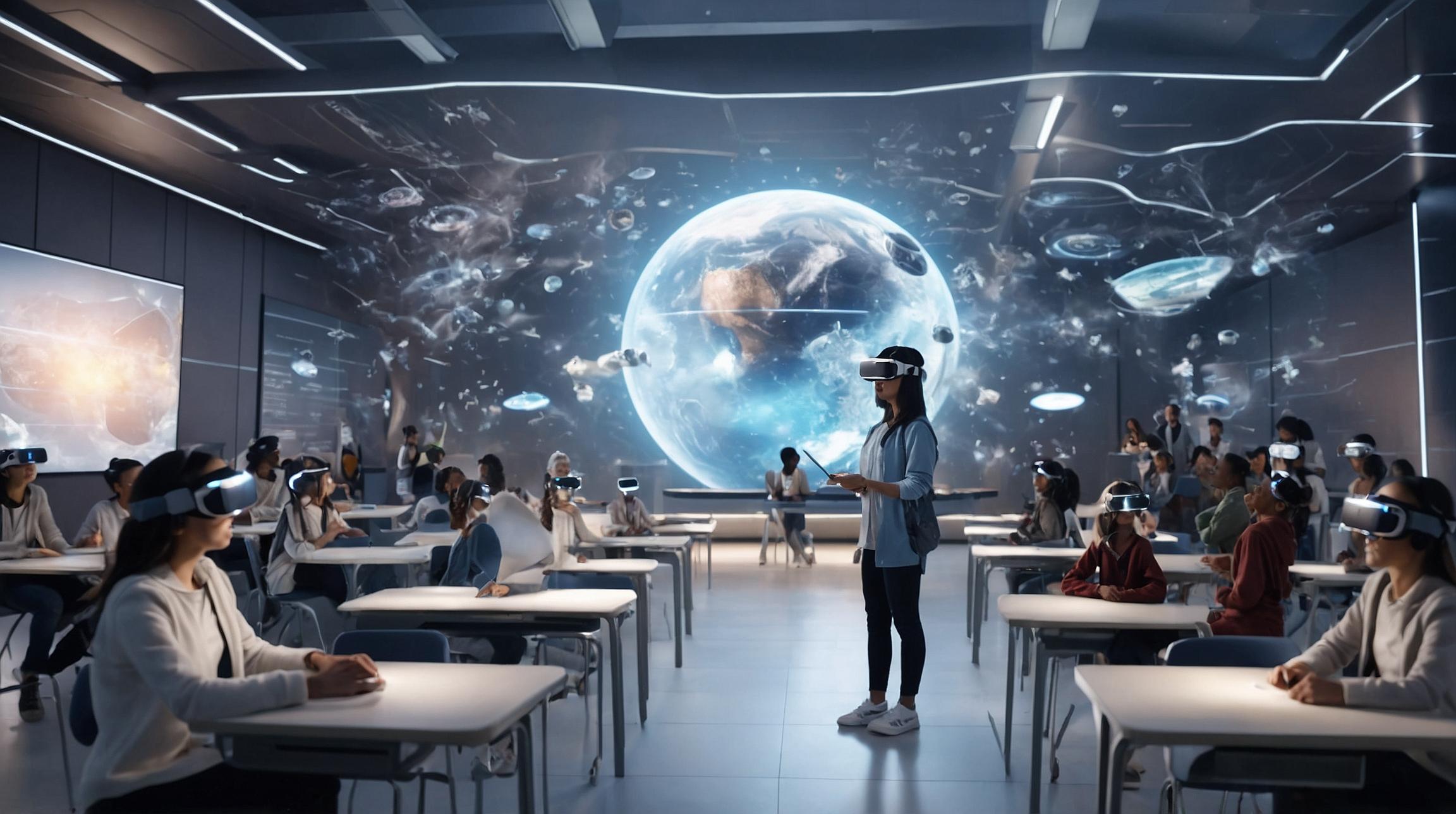The Metaverse Revolution in Education
In today's fast-paced world, emerging technologies like virtual reality (VR) and augmented reality (AR) are set to transform the education sector. Currently, the global market value for metaverse in education stands at $3.9 billion. By 2028, this is predicted to skyrocket to $19.3 billion, boasting an impressive 37.7% compound annual growth rate. This growth is attributed to how academic institutions are embracing these technologies to enhance teaching and learning experiences.
Real-World Applications in Academics
Leading universities are already integrating VR and AR. For example, Harvard University offers a VR experience that delves into the molecular structure of proteins. Similarly, the University of Central Florida (UCF) has developed an AR app focused on studying the human heart. Some schools have even established 'metaversities', which are immersive, virtual versions of their campuses where students can participate in virtual classrooms and access student services online.
Private companies are also jumping on the bandwagon by developing educational video games and simulations using VR and AR technology.
Benefits and Skepticism
Despite some skepticism, the benefits of metaverse technology in education are hard to ignore. Virtual classrooms can be customized to suit different subjects and lesson plans, providing a dynamic learning environment. Through gamified education, students can remain engaged and interested. Artificial intelligence (AI) further personalizes learning experiences, allowing students to progress at their own pace. Additionally, online learning reduces travel and textbook expenses, making education more accessible and affordable, especially for students with visual impairments.
Market Participants and Growth
The market comprises metaverse platforms, AR and VR device manufacturers, and suppliers of necessary materials. The AR/VR device segment is anticipated to witness rapid growth. Companies like NextMeet, which offers an avatar-based platform for events and education, and ClassVR, which allows educators to create VR experiences, are at the forefront of this technological evolution.
Future Outlook and Challenges
With AR and VR, students can visualize historical events or scientific phenomena without distracting from the lesson. This is further enhanced in virtual labs where students encounter interactive safety warnings. The driving forces for this market include increased training, rapid adoption, and declining tech tool prices. Complementary technologies like AI and blockchain are also becoming integral to metaverse platforms. However, challenges persist, such as ensuring reliability, managing scalability, and addressing potential health concerns associated with excessive use. There's also the high cost of installing and maintaining sophisticated tech products.
As these technologies continue to develop, the metaverse in education holds the promise of revolutionizing how we learn, making it an exciting field to watch.













